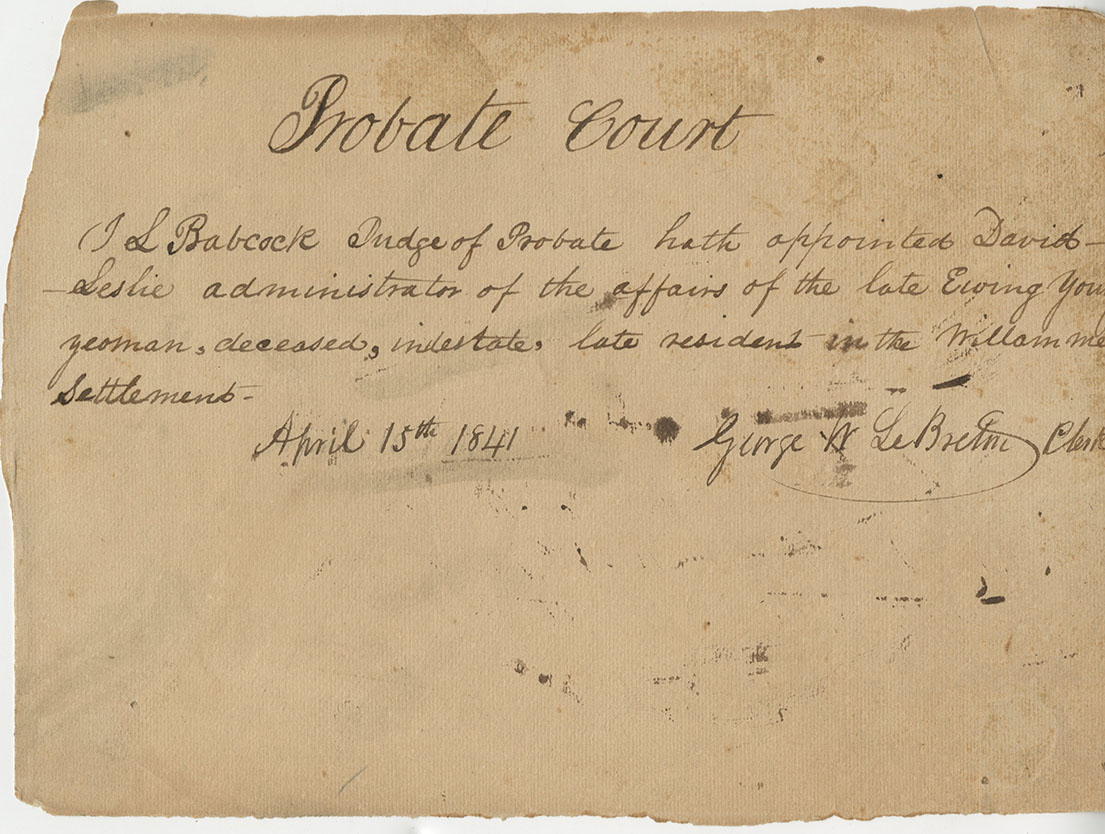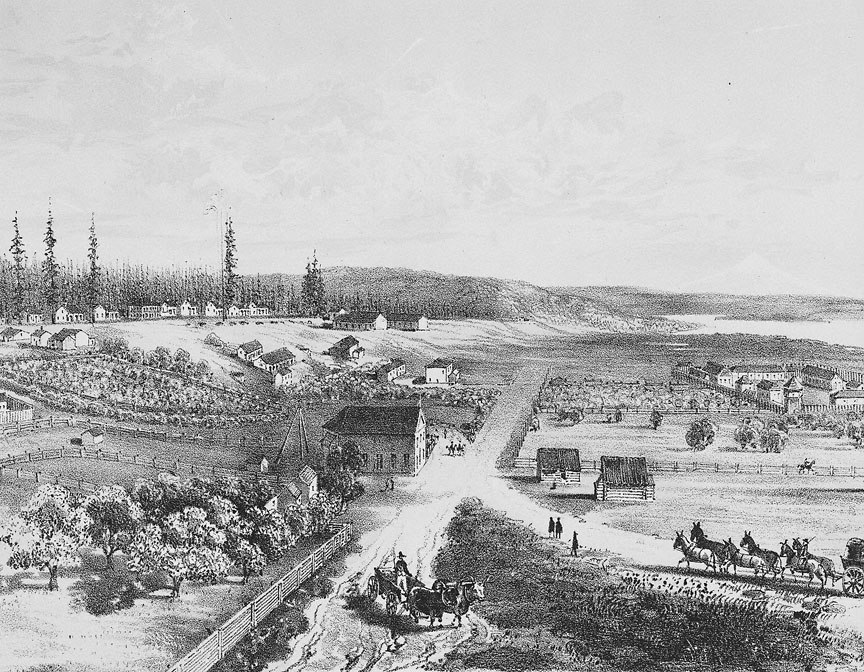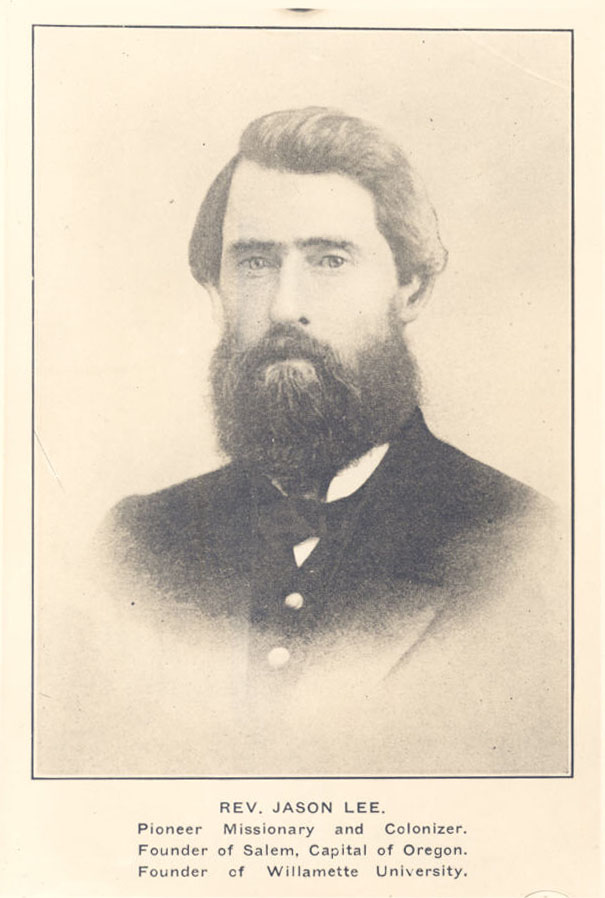In January 1837, settlers in the Willamette Valley organized the Willamette Cattle Company (WCC) for the singular purpose of buying cattle in California and herding them to Oregon. The British-owned Hudson’s Bay Company (HBC) owned nearly all of the cattle in the Oregon Country; and although HBC Chief Factor John McLoughlin would lease two head of cattle to a settler or a settler household, he would not sell them.
The settlers wanted their own herds for beef and for their value as a medium of exchange in an economy that was nearly bereft of money. Their initial plans for the cattle-buying expedition received a boost with the arrival of U.S. Navy Lt. William A. Slacum in December 1836. Slacum, whose job was to survey and report on conditions in the Oregon Country, offered the settlers free passage to California aboard his ship the Loriot.
Slacum was motivated by terms of the Treaty of 1818, an agreement between Britain and the United States to honor a “joint occupation” of the Oregon Country until the “boundary question” was resolved. Both nations had colonial aspirations, and Slacum believed that supporting the American population would bolster the United States’ bargaining position. Slacum’s census of the white-male settlement recorded sixteen Americans, thirteen French Canadian HBC retirees, and one British subject. He also noted that many of the settlers had Native wives and children.
On January 13, 1837, eight Americans, a Briton, and two French Canadians formed the WCC, signed an investment contract, and elected Ewing Young to lead the party to California. Slacum, Methodist missionary Jason Lee, McLoughlin, and two other HBC employees invested money but did not join the expedition.
The Loriot left the Columbia River on February 10, 1837, and reached Fort Ross, near Bodega Bay, on February 20. By late June, Young had succeeded in buying 700 to 750 Longhorn cattle, and the party began the journey to Oregon. The Longhorns, raised as free-roaming livestock, were wild and difficult to manage.
The four-month return trip was arduous, sometimes rancorous, and deadly. On August 26 and September 15, heated arguments broke out when several men disagreed with Young’s schedule. Young prevailed, but hard feelings continued. On September 14, five miles north of the Shasta River, two friendly Indians, one a boy about ten years old, came into Young’s camp. Two of the WCC men, George Gay and William Bailey, shot at and killed the older Indian as revenge for an unrelated two-year-old attack in which four of Gay’s party had been killed. The boy escaped. There was no evidence that the murdered Indian was involved in the prior attack, and Young and some of his men were strongly critical of the shooting. Counterattacks were made by the Indians, but no one else was killed.
In October, the WCC party arrived in Oregon with an estimated 630 head of cattle. Dispersal of cattle to the men of the WCC and other investors significantly added to the economic stability of Oregon’s agricultural community, then less than a decade old.
-
![Item Number Willamette Cattle Company records, MSS 500; Receipts signed by Philip Leget Edwards, treasurer of the Willamette Cattle Company, to John McLoughlin and Jason Lee for their investments in the company, dated January 19, 1837.]()
Willamette Cattle Company treasurer Philip Leget Edwards' signed receipts to John McLoughlin and Jason Lee for their investments in the company, Jan. 19, 1837..
Item Number Willamette Cattle Company records, MSS 500; Receipts signed by Philip Leget Edwards, treasurer of the Willamette Cattle Company, to John McLoughlin and Jason Lee for their investments in the company, dated January 19, 1837. Oreg. Hist. Soc. Research Libr., Willamette Cattle Co. records, Mss 500
Related Entries
-
![Ewing Young (c. 1796–1841)]()
Ewing Young (c. 1796–1841)
Ewing Young was a Santa Fe trader, a Rocky Mountain man, a California l…
-
![Hudson's Bay Company]()
Hudson's Bay Company
Although a late arrival to the Oregon Country fur trade, for nearly two…
-
![Jason Lee (1803-1845)]()
Jason Lee (1803-1845)
Few names in the history of early nineteenth-century Oregon are better …
-
![John McLoughlin (1784-1857)]()
John McLoughlin (1784-1857)
One of the most powerful and polarizing people in Oregon history, John …
Map This on the Oregon History WayFinder
The Oregon History Wayfinder is an interactive map that identifies significant places, people, and events in Oregon history.
Further Reading
Edwards, Philip Leget. Sketch of the Oregon Territory or Emigrants' Guide. Liberty, MO: Herald Office, 1951.
Slacum, William A. “Slacum’s Report on Oregon.” Oregon Historical Quarterly 13 (June 1912): 175-224.
Young, F. G. “Ewing Young and his Estate.” Oregon Historical Society 21 (September 1920): 171-315.





